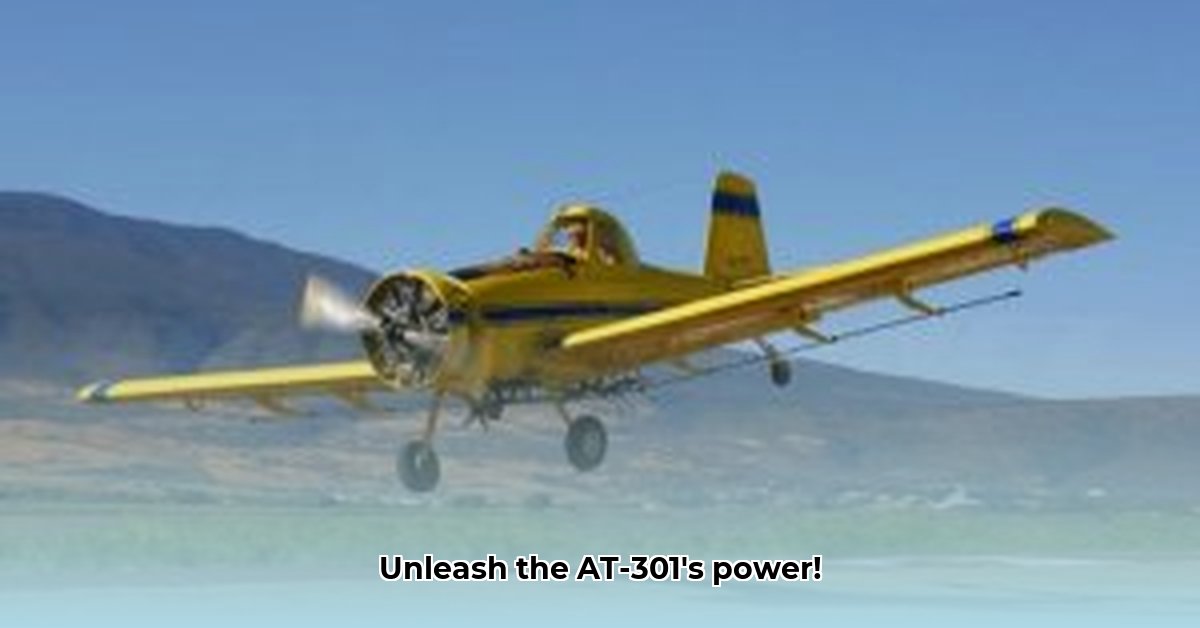
The Air Tractor AT-301: a legend in agricultural aviation. This robust, low-wing aircraft has been a reliable workhorse for decades, tirelessly spraying crops across the globe. But its performance characteristics and operational nuances aren't always straightforward. This guide offers a comprehensive overview, clarifying performance data discrepancies and providing practical insights for various stakeholders. For information on the newer AT-402 series, check out the AT-402 specs.
Understanding the AT-301's Performance: Nuances and Variations
One common source of confusion surrounds the AT-301's performance figures. Reported cruise speeds vary considerably, ranging from approximately 71 mph to 140 mph. This isn't due to inaccurate reporting, but rather reflects the significant impact of several variables. Payload weight, altitude, and even subtle differences between various AT-301 sub-models all influence its speed and operational characteristics. The aircraft's performance, much like a car's fuel efficiency, is directly affected by its load. A heavier payload carrying more chemicals will naturally reduce the aircraft's speed.
Technical Specifications and Performance Data
The AT-301 is engineered for low-altitude operations and the demands of agricultural work. Its key features are summarized below. Note that exact specifications may vary slightly depending on the configuration and model year.
| Feature | Specification | Notes |
|---|---|---|
| Engine Type | Typically a powerful piston engine | Some AT-300 series models utilize turboprop engines; check Air Tractor documentation for specific model details. |
| Wingspan | Approximately [Insert Wingspan] | This needs to be specified from Air Tractor documentation. |
| Useful Load | Approximately [Insert Useful Load] | This significantly impacts both speed and range. |
| Hopper Capacity | Approximately [Insert Hopper Capacity] | Hopper size influences operational efficiency (fewer passes per field). |
Always cross-reference these estimates with official Air Tractor documentation for precise specifications of any given AT-301 aircraft.
Operational Aspects: Flight Characteristics and Maintenance
Operating the AT-301 demands skill and experience. Its low-wing, tailwheel design contributes to exceptional stability at low speeds—critical for precise crop spraying. However, precise control is necessary for effective operation. Comprehensive pilot training is essential. Experienced pilots often describe the AT-301 as responsive and relatively easy to handle, making accurate spraying achievable.
Modern advancements greatly benefit spraying precision. Many AT-301s utilize GPS-guided spraying systems, enhancing efficiency and minimizing environmental impact. This translates directly to reduced chemical waste and boosts the sustainability of agricultural operations.
Market Position and Competitive Landscape: Adapting to Change
The AT-301 remains a significant player in agricultural aviation. Nevertheless, the industry is dynamic, with continuous advancements in aircraft design and supporting technologies. Air Tractor responds to this by actively investing in research and development (R&D). Their focus remains on enhancing fuel efficiency and integrating advanced precision technologies. Therefore, its long-term viability hinges on its adaptability to stricter environmental regulations and competition from newer aircraft.
Actionable Insights for Key Stakeholders
The continued success of the AT-301 hinges on proactive steps taken by several key players:
Air Tractor Inc.: Prioritize R&D investment in fuel efficiency improvements, advanced precision technologies, and exploration of alternative fuels.
Agricultural Operators: Invest in thorough pilot training programs, regularly compare AT-301 operating costs against newer models, and implement sustainable operational practices.
Regulators: Develop environmental regulations that balance agricultural needs with environmental protection, and implement incentives for eco-friendly technologies.
Financial Institutions: Support companies driving innovation in sustainable agricultural aviation, recognizing the long-term value of investing in eco-friendly solutions.
Conclusion: A Continuing Legacy
The Air Tractor AT-301 maintains a significant legacy in agricultural aviation. Its future success depends on the collaborative efforts of manufacturers, operators, regulators, and financial institutions. By embracing innovation and sustainable practices, the AT-301 can continue to play a critical role in the future of agriculture.